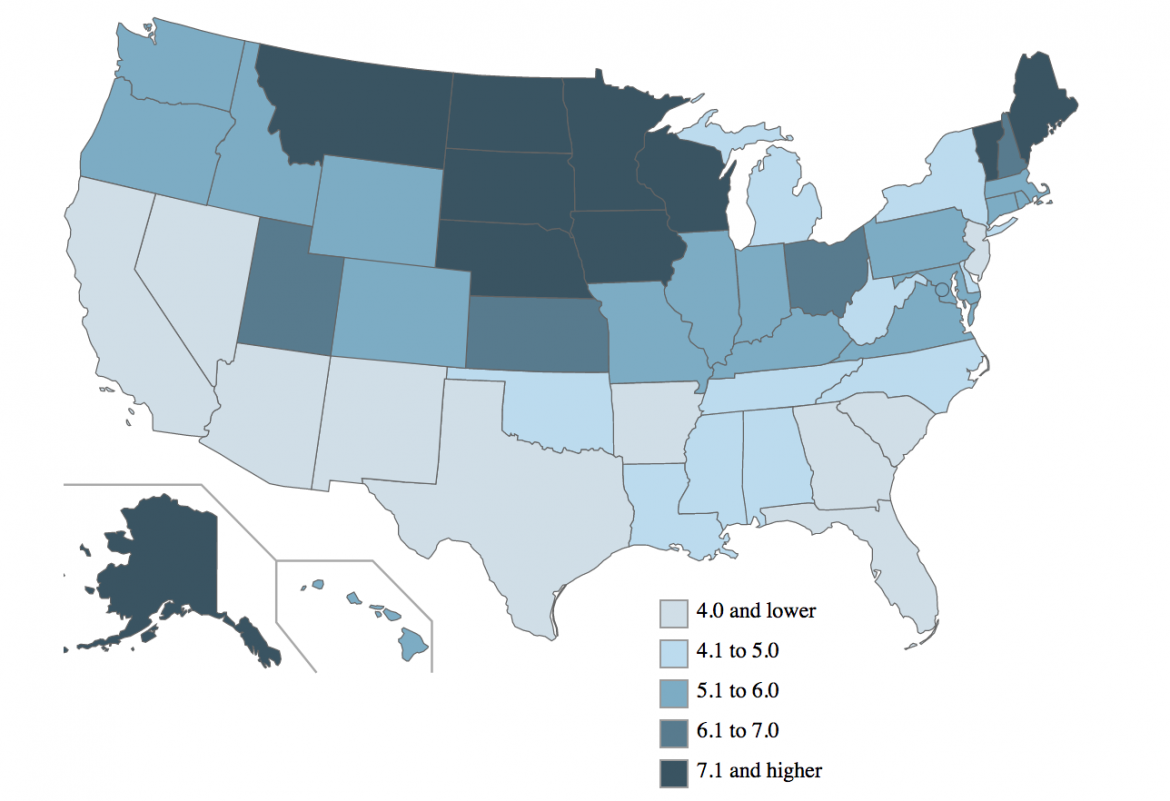As the Wisconsin gubernatorial race progresses, Democratic candidate and Milwaukee businessman Andy Gronik has repeatedly taken aim at Republican Gov. Scott Walker.
In a Jan. 24 blog post, Gronik condemned Walker for low wages that he said lead to residents having to work multiple jobs.
Said Gronik: “Wisconsinites will remember Walker’s failures when they go to work at that second, third or fourth job because their wages are so low that one job won’t cut it.” The Observatory checked this claim.
Although Wisconsin’s unemployment rate was at an all-time low of 2.9 percent in February, 2017 data from the Bureau of Labor Statistics illustrates that every Wisconsin county had below-average employee wages during the fiscal year.
The average weekly wage in the United States was $1,021 that year. Dane County’s average of $1,017 fell just short of that benchmark. Milwaukee County had the highest employment statewide with 486,977 workers; its average weekly wage was $955.
More notably, statewide, workers in the third quarter of 2017 experienced a 1 percent drop in wages compared to the third quarter of 2016; nationally, wages dropped an average of 0.6 percent.
Statewide, Wisconsin ranked 29th for its wage changes and 32nd for its average weekly wage of $876.
Steven Deller, University of Wisconsin-Madison professor of agricultural and applied economics, said the inverse wage trends — high employment but low wage — is the result of a “hollowing out of the middle class.” That is, the state’s ongoing employment growth is due mostly to the addition of jobs requiring low skills for accordingly low pay.
“We’re getting a lot of growth at the low occupation levels,” Deller said. “That kind of middle class type job is becoming more and more difficult to find.”
In a 2014 report from UW-Milwaukee’s Center for Economic Development, Marc Levine echoes Deller, attributing Wisconsin’s low wages to “downward pressure on historically middle-wage jobs.” This downward pressure simultaneously occurred with an ongoing growth in low-wage jobs, which was compounded by a “surge” of those positions in 2010, a period marked by post-recession recovery, Levine said.
At the time of the report, low-wage jobs had the highest growth rate of 18.7 percent between 2010 and 2013, while the number of middle and high-wage jobs declined at rates of 1.3 and 2.9 percent, respectively.
“When you look at where a lot of the job openings are and a lot of the job growth is coming from, it’s very low-paying jobs,” Deller added.
In addition, as of 2015, an estimated 7.6 percent of working age Wisconsin residents held down two or more jobs, according to BLS data. That is far above the national average of 4.9 percent, the bureau found, and the sixth highest among all the states, reflecting Gronik’s charge that “wages are so low (in Wisconsin) that one job won’t cut it.”
The State of Working Wisconsin report for 2017 by UW-Madison’s COWS think tank also noted slow wage growth as a factor in Wisconsin’s declining middle class and rising income inequality.
According to data from the Pew Charitable Trust, COWS and UWM the trend of a shrinking middle class predates Walker, who took office in 2011.
However, some of the 5.7 percent decline in the share of families in the middle class in Wisconsin between 2000 to 2013 took place during Walker’s tenure. “That is the largest decline posted by any state in the nation,” COWS noted.
Employment is growing in Wisconsin, but wage growth in many sectors is lagging. And Wisconsin does rank far above the national average when it comes to workers holding multiple jobs. Therefore, The Observatory rates Gronik’s claims as Verified.
Sources:
U.S. Department of Labor, Bureau of Labor Statistics, Multiple Jobholding in States in 2015, 2017
Andy Gronik for Wisconsin campaign site, Andy Gronik Response to Gov. Walker’s State of the State Address, 2018
Wisconsin Department of Workforce Development, Wisconsin Unemployment Rate Reaches an All-Time Low of 2.9% in February, March 22, 2018
Bureau of Labor Statistics, County Employment and Wages in Wisconsin — Third Quarter 2017, April 17, 2018
University of Wisconsin-Milwaukee Center for Economic Development, Is Wisconsin Becoming a Low-Wage Economy?, 2014
COWS, UW-Madison, The State of Working Wisconsin 2017
Pew Research Center, America’s Shrinking Middle Class, May 11, 2016

